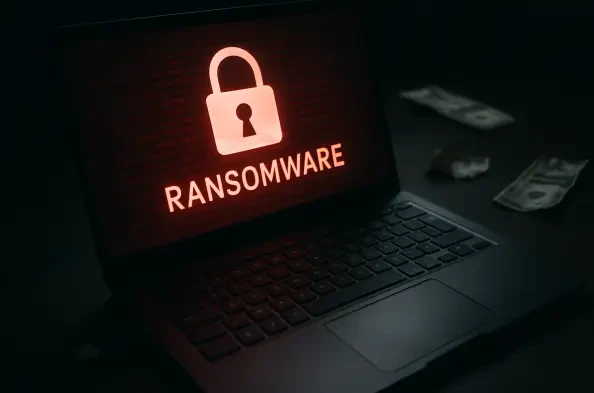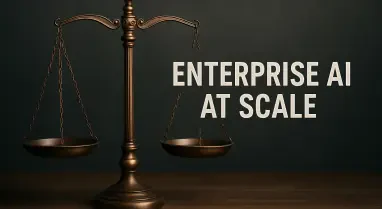In an era where cyber threats loom larger than ever, a critical vulnerability in Microsoft Exchange hybrid deployments has sparked urgent action from the tech giant. Identified as CVE-2025-53786, this security flaw poses a severe risk to organizations using a mix of on-premises Exchange Servers and Exchange Online, potentially allowing attackers with administrative access to an on-premises server to escalate privileges into the connected cloud environment undetected due to the lack of clear audit trails. This alarming possibility stems from the shared use of the Office 365 Exchange Online application as a service principal in hybrid setups. Microsoft has issued a stark warning to administrators, emphasizing the need for immediate remediation to protect sensitive data and systems. As cyber attackers grow more sophisticated, the stakes for organizations relying on hybrid configurations have never been higher, prompting a deep dive into the nature of this vulnerability and the steps required to mitigate it.
1. Unveiling the Critical Vulnerability
The discovery of CVE-2025-53786 has sent ripples through the cybersecurity community, highlighting a dangerous flaw in Microsoft Exchange hybrid deployments. This vulnerability allows attackers with administrative access to an on-premises Exchange Server to stealthily escalate privileges into the organization’s cloud environment via Exchange Online. What makes this threat particularly insidious is the absence of easily detectable traces, meaning unauthorized access could go unnoticed for extended periods. Microsoft has pinpointed the root cause as the shared service principal—the Office 365 Exchange Online application—used for authentication between on-premises and cloud systems. Without prompt action, organizations risk significant breaches that could compromise sensitive data and disrupt operations, underscoring the urgency of addressing this issue before malicious actors exploit it.
Beyond the immediate threat, the implications of CVE-2025-53786 extend to the broader security posture of organizations using hybrid setups. Many businesses rely on these configurations to balance the control of on-premises systems with the scalability of cloud solutions, making them a prime target for attackers. Microsoft’s alert serves as a wake-up call, emphasizing that even a single point of entry, such as an on-premises server, can become a gateway to widespread compromise. The lack of adoption of updated security measures among many customers has only heightened the risk, as outdated systems remain vulnerable. As cyber threats evolve, staying ahead of such vulnerabilities requires not just awareness but swift implementation of protective measures to safeguard critical infrastructure against potential exploitation.
2. Exploring Exchange Hybrid Deployments
Exchange hybrid deployments represent a strategic blend of on-premises Microsoft Exchange Servers and the cloud-based Exchange Online, a component of most Microsoft 365 subscriptions. This setup enables organizations to maintain certain mailboxes and services on-site while leveraging the flexibility and accessibility of the cloud for others. However, the shared use of the Office 365 Exchange Online application as a service principal has now been flagged as a security liability due to CVE-2025-53786. Microsoft is taking decisive steps to phase out this shared principal, beginning with temporary blocks on Exchange Web Services (EWS) traffic this month. This action is part of a larger initiative to transition to a dedicated Exchange hybrid app, enhancing security by isolating authentication processes and reducing the attack surface for potential intruders.
The shift away from EWS, which will eventually be replaced by the more secure Microsoft Graph API, marks a significant evolution in how hybrid environments are managed. Organizations currently using the shared principal must prepare for disruptions if they fail to update their systems, as Microsoft’s phased strategy aims to accelerate the adoption of safer configurations. The temporary EWS traffic blocks, lasting two to three days, will impact users with mailboxes in both on-premises and cloud environments who rely on shared features. This move is not just a technical adjustment but a critical step toward fortifying hybrid setups against emerging threats. Businesses must prioritize understanding these changes to ensure continuity and protect their digital assets from vulnerabilities inherent in outdated authentication methods.
3. Microsoft’s Strategic Transition Plan
Microsoft has been proactive in addressing the security concerns tied to hybrid Exchange deployments by rolling out hotfix updates earlier this year for various server versions, including Exchange Server 2019 CU 14 and CU 15, 2016 CU 23, and Subscription Edition RTM. These updates are crucial for compatibility with the dedicated Exchange hybrid app, which replaces the vulnerable shared service principal. Administrators are instructed to install these updates, execute a PowerShell script to enable the dedicated app, and deploy it across their systems. The final phase of this transition, expected to be completed by October 2026, involves adopting Microsoft Graph API calls and refining app permissions to a more granular model, further tightening security protocols for hybrid environments.
Despite the availability of these updates, adoption rates for the dedicated hybrid app remain disappointingly low, even among organizations using supported server versions. To push compliance, Microsoft has scheduled temporary blocks of EWS traffic, which will disrupt services for non-compliant systems. After October 31 of this year, the shared service principal will be permanently disabled, rendering hybrid features inoperable for those who haven’t transitioned. This firm stance reflects the urgency of securing systems against CVE-2025-53786 and other potential exploits. Organizations lagging in updates face not only operational hiccups but also heightened exposure to cyber risks, making it imperative to align with Microsoft’s timeline to avoid critical service interruptions and security breaches.
4. Specific Risks of CVE-2025-53786
The CVE-2025-53786 vulnerability presents a unique and dangerous challenge due to its stealthy nature, allowing attackers to exploit the shared service principal for unauthorized access to an organization’s cloud environment. Successful exploitation hinges on an attacker first gaining administrator-level access to an on-premises Exchange Server, a barrier that determined and resourceful adversaries might overcome through social engineering or other attack vectors. Once inside, they can escalate privileges without leaving obvious traces, making detection and response incredibly difficult for security teams. Microsoft has highlighted this risk as a pressing concern, urging immediate action to prevent potential breaches that could compromise entire networks and sensitive data.
The broader implications of this vulnerability lie in its potential to undermine trust in hybrid cloud solutions, which are widely adopted for their flexibility. Organizations may not even realize they’ve been compromised until significant damage is done, as the lack of auditable evidence complicates forensic analysis. This flaw exposes a critical weakness in current hybrid configurations, where a single point of failure can cascade into a full-scale security incident. Addressing this issue requires not just technical fixes but a reevaluation of access controls and monitoring practices to ensure that even sophisticated attacks can be identified and mitigated before they escalate into major threats to organizational security.
5. Essential Steps for Mitigation
To counter the risks posed by CVE-2025-53786, Microsoft has outlined a clear set of actions for organizations to follow. These steps are critical to securing Exchange hybrid deployments and preventing unauthorized access. Administrators must take immediate action to protect their systems by adhering to the following guidelines:
- Apply the Hotfix Update: Install the latest hotfix or newer release on all on-premises Exchange servers to ensure compatibility with the dedicated app.
- Set Up the Dedicated Hybrid App: Configure and deploy the dedicated Exchange hybrid application to replace the shared service principal.
- Clear Shared Principal Credentials: Reset the keyCredentials of the shared service principal by removing associated certificates to prevent unauthorized access.
For organizations that no longer use Exchange hybrid or OAuth authentication with Exchange Online, it’s equally important to reset the service principal’s keyCredentials to eliminate any lingering vulnerabilities. Acting swiftly on these recommendations can significantly reduce exposure to potential exploits.
Beyond these immediate steps, maintaining a proactive security stance involves regular system audits and updates to stay ahead of emerging threats. The transition to the dedicated hybrid app is not just a one-time fix but part of an ongoing commitment to robust cybersecurity. Organizations should also ensure that staff are trained to recognize and respond to potential breaches, as human error often plays a role in initial access by attackers. By implementing these measures, businesses can fortify their defenses against CVE-2025-53786 and similar vulnerabilities, ensuring that both on-premises and cloud environments remain secure against increasingly sophisticated cyber threats that target hybrid configurations.
6. Guidance from CISA and Broader Implications
The U.S. Cybersecurity and Infrastructure Security Agency (CISA) has weighed in on the CVE-2025-53786 vulnerability, noting that there are no current reports of active exploitation. However, the agency cautions that the undetectable nature of potential attacks raises significant concerns about unnoticed breaches. CISA strongly recommends that organizations adhere to Microsoft’s mitigation steps and utilize the Microsoft Exchange Health Checker tool to identify any additional actions needed. Furthermore, CISA advises disconnecting outdated, end-of-life public-facing Exchange or SharePoint servers, such as SharePoint Server 2013 or earlier versions, from the internet to minimize exposure. With extended support for Exchange 2016 and 2019 ending on October 14 of this year, the urgency to upgrade or secure systems has never been greater.
CISA’s guidance underscores the importance of a comprehensive approach to cybersecurity, especially for organizations managing hybrid environments. The risk of unnoticed exploitation highlights the need for advanced monitoring tools and practices to detect subtle signs of compromise. Additionally, the call to retire obsolete systems reflects a broader push to eliminate legacy vulnerabilities that attackers often target. As cyber threats continue to evolve, aligning with recommendations from authoritative bodies like CISA can help organizations stay resilient. This situation serves as a reminder that security is an ongoing process, requiring constant vigilance and adaptation to protect critical infrastructure from both known and emerging risks in an increasingly complex digital landscape.
7. Strengthening the Exchange Ecosystem
Microsoft’s broader efforts to enhance the security of the Exchange ecosystem have been evident in its persistent push for organizations to update and patch on-premises Exchange servers. This initiative is a direct response to a notable surge in attacks targeting Exchange servers over recent years, which have exploited weaknesses in outdated systems to devastating effect. By requiring regular updates as a condition for accessing Exchange Online email services, Microsoft aims to elevate the overall security profile of hybrid and on-premises environments. This strategy not only addresses specific vulnerabilities like CVE-2025-53786 but also builds a more robust framework to withstand future threats, reflecting a commitment to safeguarding customer data in an era of escalating cyber risks.
The focus on regular maintenance and upgrades is a critical component of a proactive defense strategy, as unpatched systems often serve as entry points for attackers. Microsoft’s insistence on modernization is a call to action for organizations to prioritize cybersecurity investments, ensuring that their infrastructure can resist sophisticated exploits. This approach also fosters greater collaboration between vendors and customers to address systemic risks within the Exchange platform. By aligning with these efforts, businesses can contribute to a safer digital ecosystem, reducing the likelihood of widespread incidents that could disrupt operations or compromise sensitive information. The ongoing challenge lies in balancing operational needs with stringent security requirements to maintain trust and reliability.
8. Moving Forward with Actionable Security
Reflecting on the urgency surrounding CVE-2025-53786, Microsoft and CISA have laid out a clear path for organizations to secure their Exchange hybrid deployments against stealthy privilege escalation threats. Administrators are guided to install critical hotfix updates, transition to the dedicated Exchange hybrid app, and reset shared service principal credentials to block unauthorized access. These measures, coupled with the eventual shift to Microsoft Graph API by October 2026, are designed to fortify systems against exploitation. CISA’s advice to retire outdated servers and run health checks further reinforces the need for comprehensive security audits, ensuring no stone is left unturned in the quest for robust protection.
Looking ahead, organizations should focus on integrating advanced threat detection tools to catch potential breaches that evade traditional monitoring. Establishing regular training programs for IT staff can enhance preparedness against social engineering tactics often used to gain initial access. Additionally, collaborating with cybersecurity experts to simulate attack scenarios could uncover hidden weaknesses in current setups. By prioritizing these next steps, businesses can build resilience against future vulnerabilities, ensuring that their hybrid environments remain secure in a landscape where cyber threats are ever-evolving.






